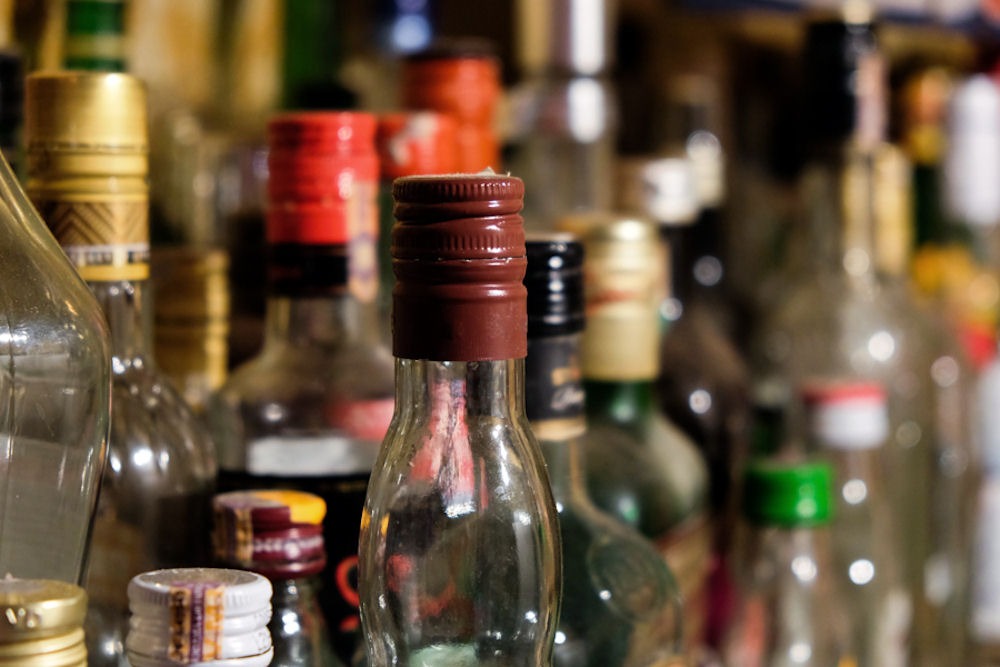Many social interactions and special occasions are often accompanied by the consumption of alcohol. For many individuals, social drinking is a common part of their lives that is deeply ingrained in their culture. Drinking alcohol on occasion is often considered harmless and for some, can even be beneficial for overall health.
However, it is important to be able to recognize the difference between social drinking and alcoholism. Unlike social drinking, alcoholism is a complex and debilitating condition that requires attention, intervention, and treatment. Due to the fact that alcohol addiction can often be overlooked, the following warning signs should be considered and not ignored when social drinking goes too far.
Many individuals who are considered social drinkers don’t necessarily decline into alcoholism. Becoming an alcoholic can be a long process that involves multiple different factors. Individuals may begin as social drinkers and slowly become alcoholics as they begin to consume more alcohol. Some who suffer from alcohol misuse may begin drinking alone or often turn to alcohol when they are stressed, bored, or lonely.
Individuals who may be experiencing alcohol abuse may be able to stop without assistance, but many find that they require professional treatment and support for long-lasting recovery. Our alcohol addiction treatment program in Wisconsin can help today!
What is Social Drinking?
Social drinking involves the moderate consumption of alcohol in social settings. It can be a social pastime that pairs with various events, such as parties, weddings, holidays, or other special occasions with friends and family. Moderate drinking is generally considered safe for most adults, with specific health benefits associated with certain types of alcoholic beverages when enjoyed in moderation.
But how can you quantify what an acceptable amount of alcohol a social drinker consumes? Moderation is the crucial factor that differentiates social drinking from alcohol misuse. Social drinking is typically defined as up to one drink per day for women and up to two drinks per day for men. One drink is equivalent to 12 ounces of beer, 5 ounces of wine, or 1.5 ounces of distilled spirits.
What are the Characteristics of a Social Drinker?
Social drinkers typically tend to share the following characteristics:
- Controlled and Occasional Consumption: Social drinkers usually only indulge in occasional alcohol consumption. On these specific occasions, these individuals also keep their alcohol intake within moderate limits. They also can easily choose to abstain from alcohol without feeling a strong compulsion to drink.
- Enhances Social Occasions: For social drinkers, alcohol is often viewed as a source of enjoyment that is paired with social activities. It can be a tradition of relaxation and camaraderie that specifically contributes positively to social interactions.
- Awareness of Limits: Social drinkers are extremely aware of their alcohol consumption as well as their alcohol intake limits. They do not indulge in excessive or problematic drinking. They are fully in control of their drinking and can recognize when to cease alcohol intake.
What is Alcoholism?
Alcoholism, also referred to as alcohol use disorder (AUD), is a chronic condition that is characterized by the inability to stop or control alcohol consumption despite negative consequences. Alcoholism goes beyond social drinking and often involves a compulsive need to drink alcohol. This compulsion can potentially lead to a psychological and physical dependence on alcohol.
What are the Signs of Alcohol Abuse?
Alcohol misuse in individuals can be recognized by the following characteristics:
- Loss of Control: Individuals who struggle with alcohol misuse are unable to control their drinking. These individuals may repeatedly attempt to quit drinking altogether or try to limit their alcohol intake but they are unable to resist the urge to drink.
- Increased Alcohol Tolerance: Alcoholism can lead to an increased alcohol tolerance over time. This then in turn requires the individual to drink higher amounts of alcohol in order to achieve the desired effects. This increased tolerance can lead to a dangerous cycle of escalating alcohol consumption.
- Neglect of Responsibilities: Alcohol misuse can lead to a complete neglect of responsibilities at home, work, or in personal relationships. Individuals suffering from alcoholism may find themselves prioritizing alcohol over other important aspects of life. An escalating neglect of responsibilities is a huge red glad for a very real developing problem.
- Withdrawal Symptoms: Individuals suffering from alcohol misuse can feel alcohol withdrawal symptoms. Physical symptoms such as nausea, anxiety, and even tremors are common among those with alcoholism. These physical symptoms often motivate individuals to continue a harmful cycle of drinking in order to avoid the discomfort associated with withdrawal symptoms.
Along with these characteristics, there are also other specific warning signs that can indicate that a social drinker is becoming an alcoholic. They can include:
- Not being able to realize when it’s time to stop drinking
- Drinking daily outside of mealtime
- Engaging in multiple social binge drinking sessions a week
- Being drunk before arriving at social gatherings
- Frequently being in the company of other drinkers
- Engaging in drunk driving
- Participating in risky behaviors while under the influence
- Suffering regular blackouts
- Feeling shame or guilt about previous behavior while drinking
- Using alcohol as a reward
- Finishing other people’s drinks
- Becoming defensive when being questioned about their drinking behavior
What is Considered Drinking Responsibly?
Drinking responsibly in social settings can sometimes be hard to recognize. Here are some simple guidelines that characterize responsible drinking:
Setting Limits: Individuals who drink responsibly set limits on their alcohol consumption and stick to them. They are mindful of the recommended guidelines for healthy alcohol consumption, and they successfully avoid exceeding those limits.
Alternating with Non-Alcoholic Drinks: Responsible drinkers make sure to include non-alcoholic beverages in between consuming alcoholic drinks. This helps an individual to stay hydrated and reduce overall alcohol intake.
Eating Before Drinking: Drinking responsibility involves prioritizing eating food before drinking alcoholic beverages. By eating before drinking alcohol, the absorption of alcohol is slowed down. This helps to reduce the overall impact of alcohol consumption on the body.
Pacing Yourself: Individuals who drink responsibly slowly consume their alcoholic beverages. They avoid binge drinking completely. By pacing your drinking consumption, your body can process alcohol more effectively.
How to Navigate the Line Between Social Drinking and Alcoholism
For some, it may be easy to distinguish between social drinking and alcoholism however, for many individuals, it can become extremely difficult to identify the difference. Many factors can play a role in the development of alcoholism. These factors include mental health issues, environmental influences, and genetic predisposition.
It is crucial to be aware of the warning signs. Recognizing these signs can help you or your loved ones assess their relationship with alcohol regularly. If an individual finds themselves questioning their drinking habits, seeking professional help for alcohol misuse is critical. Early intervention and treatment can prevent problematic drinking patterns from developing into alcoholism.
Can an Alcoholic Become a Social Drinker?
Becoming a social drinker after experiencing alcoholism can be challenging and even impossible for some. Even though social drinking is generally considered a low-risk activity, any moderate drinking is extremely dangerous for alcoholics.
Many alcoholics, even while in recovery, are not able to stop after one or two drinks. Alcohol of any amount can cause a relapse. This can cause an individual years to find recovery again, especially without professional help.
If you or someone you know is a recovering alcoholic, it’s best to avoid alcohol. This may also mean avoiding activities and environments that revolve around alcohol intake. This is especially important for individuals who are in the early months of sobriety. It is during these initial months that an individual in recovery is the most vulnerable to relapse.
How to Seek Help for Alcoholism at Wisconsin Recovery Institute
When it comes to alcoholism, seeking professional help is crucial. The Wisconsin Recovery Institute is a valuable resource for any individuals seeking support, treatment, and guidance on their journey to recovery. With a dedicated team of experienced professionals, the Wisconsin Recovery Institute offers a comprehensive alcohol addiction treatment plan tailored to an individual’s unique needs.
Our facility offers personalized treatment plans that address both the physical and psychological aspects of alcoholism. This could include drug and alcohol detox in order to manage symptoms. It may also involve individual therapy to identify any underlying triggers and develop healthy coping mechanisms. We also offer group therapy for peer support and accountability, as well as holistic therapies to promote overall wellness.
If you or someone you know is facing critical challenges with alcohol, don’t hesitate to reach out to the Wisconsin Recovery Institute for the proper support and resources needed to begin on the path to recovery. Seeking help is a sign of strength, and with the right level of support, long-term recovery is not only possible but completely achievable. Contact us today to begin the first step to lifelong recovery.




